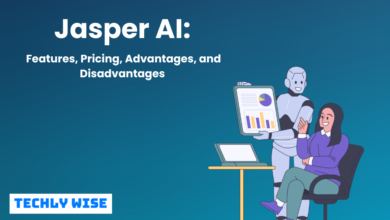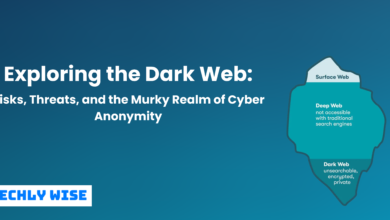
Datafication, as defined by MayerSchoenberger and Cukier, is the conversion of social action into online quantified data that enables real-time tracking and predictive analysis. In other words, it entails turning previously unknown processes or actions into data that can be observed, recorded, analyzed, and optimized. The most recent technology we employ has made it possible for many new ways to “identify” our routine actions.
A technological development called “Datafication” converts many parts of our lives into data, which is then converted into information and realized as a new kind of value. Datafication and Victor Mayer-Schönberger were first mentioned in a more general sense in 2013.
Datafication had previously been used to describe the study of data-based representations of our lives, but not on the current scale. The key drivers of this transition were the effect of big data and the availability of computer power for predictive analytics.
It differs from digitization, which transforms analog content, such as movies, books, and images, into digital information, or a series of ones and zeros, which computers can interpret. The larger process of “Datafication” entails turning everything in existence into data.
The ideology of data, which is a part of Datafication, contends that data can occasionally reflect social reality more truthfully or objectively than pre-digital interpretations.
What Is the Use of Datafication?
To make data-driven decisions, organizations are increasingly embracing Datafication. The data gathered from diverse sources is used in this process, also known as Datafication, to inform choices and tactics.
What exactly is the application of Datafication? It has several potential applications:
Data Analysis
Companies may get insight into consumer behavior, spot patterns, and make better decisions by gathering and analyzing data.
Forecasting
Businesses can identify trends and predict future events by using predictive analytics. This enables them to stay competitive and get ready for shifts in consumer demand.
Advertising
Businesses target particular clients with adverts and offer catered to their interests to personalize marketing strategies.
Here are just a few examples of how companies are utilizing Datafication to guide their choices. This trend will likely increase in the upcoming years as more businesses realize the importance of gathering and utilizing data.
Advantages of Datafication
Efficiency
Large amounts of data may be processed fast, and prompt access to the information is made possible via Datafication. This enables organizations to react swiftly to modifications in the market or client needs.
Enhanced Accuracy
Datafied information is more accurate than manual data entry because it removes mistakes brought on by human error, incompatibilities in data formats, and erroneous data interpretations. Increased accuracy, quality assurance, and customer happiness are the ultimate results.
Cost Reduction
Companies that employ it can save money by using automated systems and techniques instead of human ones for data entry, storage, and processing. Also, it may result in significant operating expense reductions.
Datafication Challenges
Datafication can be difficult for various reasons. One important factor is having the appropriate data infrastructure in place. You risk creating corrupted or out-of-date data if you don’t do it. However, there is always a chance of over-datafication, or gathering more data than is necessary, which can result in privacy issues and an increase in unneeded expenses.
Scalability should also be considered during the Datafication process. It might not be worthwhile to spend the time or money on it in the first place if you can’t simply scale up (or down) while still maintaining a high-quality output.
Here are some other difficulties with Datafication:
- Risks to data security
Hazards associated with keeping confidential customer or business information.
- A lack of qualified staff
Finding enough skilled individuals with Datafication experience and knowledge can be difficult.
- Time-consuming
Processes for Datafication take a long time to plan and implement.
- Expensive maintenance
The cost of ongoing evaluation and improvements could increase due to evolving technology
Impacts of Datafication
Human Resources
Potential employee’s characteristics and personality traits may occasionally be determined using mobile devices, applications, or social media data. This kind of data extraction and analysis might take the place of personality tests or certain behavioral interview questions.
Banking and Insurance
Datafication makes it possible to evaluate a person’s risk profile and borrower reliability in various sectors in great detail.
Smart Cities
Among the sectors that can benefit from the data generated by smart city technology are transportation, logistics, waste management, and energy sectors. Real-time Datafication may also give groups a more in-depth understanding of environmental legislation, pollution levels, and water quality.
Management of Customer Relationships
Businesses utilize it to better understand consumer expectations and preferences. The vocabulary and tone that a person employs in emails, social media, and phone calls can be used to acquire this information.
Example of Datafication in Action
Today’s world is growing more and more Datafication. But, you might be wondering what actual instances of it are. Here is a couple.
Social Media
Social media sites like Twitter and Facebook rely on Datafication to give an ever-changing feed of tailored material that users appreciate. They can serve up material that is more likely to engage users by tracking user preferences and interests.
Wearable Technology
Datafication is used by fitness trackers, smartphones, and other wearable electronics to collect and track user activities. Fitness monitors, for instance, can record steps walked, heart rate, and calories burned. This information can be utilized to create personalized health programs by providing the knowledge needed to make better health decisions.
Gadgets for Smart Homes
Smart home devices like the Amazon Echo and Google Home employ a technique called Datafication to respond to voice commands with information tailored to the user’s preferences. For instance, if you search for a particular kind of restaurant nearby, suggestions based on your preferences or past choices will be displayed.
Organizations can develop effective tools that can swiftly analyze enormous amounts of data and provide insights into trends or patterns that would otherwise be invisible by combining massive data with sophisticated algorithms and tremendous processing power. Datafication is changing how we engage with the world around us, from how we shop to how we make healthcare decisions, and it will continue to do so in the coming years.




